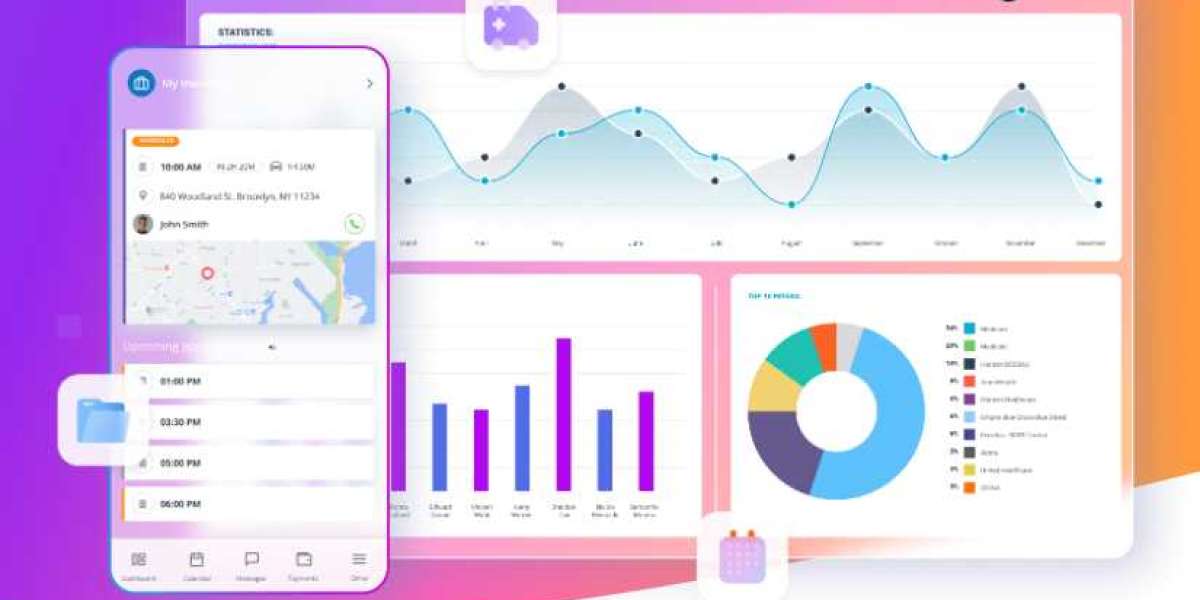As healthcare facilities strive to meet increasing patient demands and regulatory requirements, medical equipment management software (MEMS) has emerged as a transformative solution. This article explores the significance of MEMS, its key features, benefits, challenges, and future trends, providing a comprehensive guide to understanding and implementing these vital tools.
1. Understanding Medical Equipment Management Software
1.1 What is Medical Equipment Management Software?
Medical equipment management software (MEMS) is a specialized system designed to oversee and optimize the lifecycle of medical devices within healthcare settings. These systems offer functionalities that range from inventory management and maintenance tracking to compliance monitoring and data analytics. MEMS aims to enhance operational efficiency, ensure patient safety, and maintain regulatory compliance.
1.2 The Importance of MEMS in Healthcare
The integration of MEMS into healthcare operations addresses several critical needs:
- Inventory Management: Accurate tracking of medical equipment inventory ensures that devices are available when needed and helps avoid overstocking or stockouts.
- Maintenance and Calibration: Regular maintenance and calibration are essential for the optimal performance of medical devices. MEMS helps schedule and document these activities to prevent equipment failures.
- Compliance and Regulation: Healthcare facilities must adhere to strict regulatory standards. MEMS facilitates compliance by maintaining detailed records and providing timely alerts for inspections and audits.
- Cost Management: By optimizing equipment usage and minimizing downtime, MEMS can contribute to significant cost savings for healthcare providers.
2. Key Features of Medical Equipment Management Software
2.1 Inventory Tracking and Management
Effective inventory management is a cornerstone of MEMS. Key features include:
- Real-time Tracking: Continuous monitoring of equipment location and status through barcode scanning or RFID technology.
- Automated Replenishment: Alerts and automated ordering processes to ensure that inventory levels are maintained.
- Historical Data: Access to historical usage and performance data to inform purchasing decisions and forecast needs.
2.2 Maintenance and Calibration
Routine maintenance and calibration are vital for ensuring equipment reliability. MEMS features include:
- Scheduled Maintenance: Automated scheduling of maintenance tasks based on time intervals or usage metrics.
- Tracking and Documentation: Comprehensive records of maintenance activities, including dates, service providers, and any issues encountered.
- Alerts and Notifications: Reminders for upcoming maintenance tasks and calibration due dates.
2.3 Compliance and Regulatory Reporting
Adherence to regulatory standards is crucial for healthcare facilities. MEMS supports compliance through:
- Regulatory Tracking: Tools for monitoring compliance with industry regulations and standards such as FDA, ISO, and Joint Commission.
- Audit Trails: Detailed logs of equipment usage, maintenance, and compliance activities for audit purposes.
- Documentation Management: Storage and easy retrieval of documents related to equipment certifications, service records, and inspection reports.
2.4 Data Analytics and Reporting
Data-driven decision-making is a significant advantage of MEMS. Features include:
- Performance Analytics: Insights into equipment performance, utilization rates, and maintenance needs.
- Cost Analysis: Evaluation of equipment lifecycle costs, including acquisition, maintenance, and repair expenses.
- Customizable Reports: Generation of tailored reports for different stakeholders, including management, finance, and clinical staff.
2.5 Integration with Other Systems
Seamless integration with existing healthcare systems enhances MEMS functionality:
- Electronic Health Records (EHR): Linking equipment data with patient records for improved clinical workflows.
- Enterprise Resource Planning (ERP): Synchronizing with ERP systems for financial and inventory management.
- Facilities Management: Coordinating with facilities management systems for maintenance scheduling and resource allocation.
3. Benefits of Medical Equipment Management Software
3.1 Enhanced Efficiency and Productivity
MEMS streamlines operations, reducing manual processes and minimizing errors. Automated scheduling, real-time tracking, and efficient inventory management contribute to overall operational efficiency and productivity.
3.2 Improved Patient Safety
Reliable and well-maintained equipment is critical for patient safety. MEMS ensures that equipment is functioning correctly, reducing the risk of malfunctions and improving the quality of care.
3.3 Cost Savings
By optimizing equipment usage and reducing downtime, MEMS can lead to significant cost savings. Efficient inventory management, preventive maintenance, and accurate cost tracking contribute to financial benefits.
3.4 Regulatory Compliance
Maintaining compliance with regulatory standards is essential for healthcare facilities. MEMS helps ensure adherence to regulations, reducing the risk of non-compliance penalties and improving audit readiness.
3.5 Data-Driven Decision Making
Access to comprehensive data and analytics supports informed decision-making. Facilities can leverage insights to optimize equipment procurement, maintenance strategies, and resource allocation.
4. Challenges in Implementing Medical Equipment Management Software
4.1 High Initial Costs
The upfront investment in MEMS can be significant, including costs for software licenses, hardware, and training. However, the long-term benefits often outweigh these initial expenses.
4.2 Integration Difficulties
Integrating MEMS with existing healthcare systems and workflows can be complex. Ensuring compatibility and smooth data exchange between systems is essential for successful implementation.
4.3 User Training and Adoption
Effective use of MEMS requires training and user adoption. Ensuring that staff members are proficient in using the system and understand its benefits is crucial for maximizing its effectiveness.
4.4 Data Security and Privacy
Handling sensitive equipment and patient data requires robust security measures. Ensuring that MEMS complies with data protection regulations and employs secure data storage and transmission practices is vital.
5. Future Trends in Medical Equipment Management Software
5.1 Artificial Intelligence and Machine Learning
The integration of AI and machine learning into MEMS is expected to enhance predictive maintenance, automate data analysis, and provide more accurate forecasts for equipment needs.
5.2 Internet of Things (IoT) Integration
IoT technology allows for real-time monitoring and remote management of medical devices. MEMS will increasingly leverage IoT to provide more granular insights and improve equipment management.
5.3 Cloud-Based Solutions
Cloud-based MEMS solutions offer flexibility, scalability, and remote access. As healthcare facilities continue to embrace cloud technology, MEMS will increasingly move to cloud platforms.
5.4 Enhanced User Interfaces
User-friendly interfaces and mobile applications will improve accessibility and ease of use for healthcare professionals. Advances in user experience design will make MEMS more intuitive and efficient.
5.5 Advanced Data Analytics
Enhanced data analytics capabilities will provide deeper insights into equipment performance, usage patterns, and cost-efficiency. Facilities will benefit from more sophisticated reporting and decision-support tools.
6. Case Studies: Successful Implementation of MEMS
6.1 Case Study 1: Large Hospital Network
A large hospital network implemented MEMS to address inventory management challenges and improve maintenance procedures. By integrating MEMS with their existing EHR system, the network achieved significant cost savings and improved patient safety through more effective equipment tracking and maintenance.
6.2 Case Study 2: Specialty Clinics
Specialty clinics with diverse equipment needs adopted MEMS to streamline maintenance and compliance processes. The software's automated scheduling and compliance tracking features enabled the clinics to meet regulatory requirements and optimize equipment usage.
6.3 Case Study 3: Rural Healthcare Facility
A rural healthcare facility implemented MEMS to address the challenges of managing limited equipment resources. The software's inventory management and data analytics capabilities helped the facility make informed decisions about equipment procurement and maintenance, ultimately enhancing patient care.
Conclusion
Medical equipment management software is a vital tool for modern healthcare facilities, offering numerous benefits including improved efficiency, enhanced patient safety, cost savings, and regulatory compliance. While challenges such as initial costs and integration complexities exist, the advantages of MEMS make it a valuable investment for healthcare providers. As technology continues to advance, MEMS will evolve to incorporate AI, IoT, and cloud-based solutions, further revolutionizing equipment management in the healthcare sector. By understanding and leveraging MEMS, healthcare facilities can ensure that their medical equipment is managed effectively, ultimately leading to better patient outcomes and operational success.







